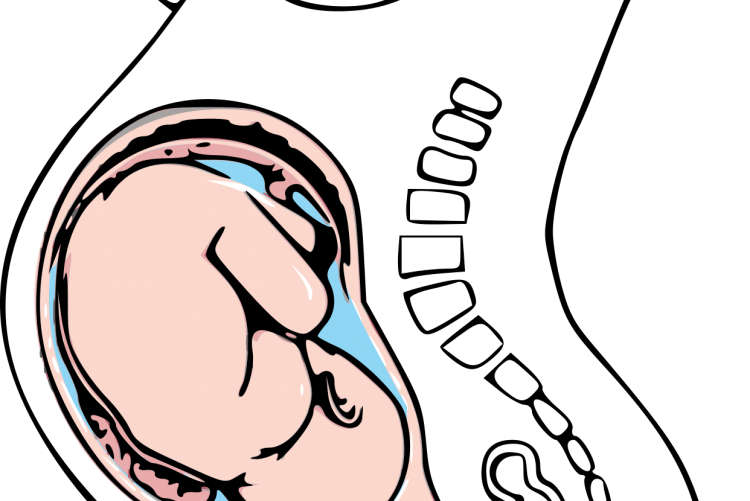Prenatal and postnatal developmental periods. Significance of Embryology. Molecular biology of Human Development how, when and where selected genes are activated and expressed in the embryo during normal and abnormal development. The role of activators and regulators of genes in embryonic patterning. The critical role of homeobox containing genes and other molecular factors in regulating early embryonic development. Application of molecular biology study techniques for example recombinant DNA, stem cell manipulation and cloning.Gametogenesis: Spermatogenesis, maturation of sperms, normal and abnormal features of seminal fluid. Oogenesis, pre and postnatal maturation of oocytes. Recruitment, growth and control of growth of oocytes. Induction and suppression of ovulation. Female reproductive cycles; phases of the ovarian cycle and the menstrual cycle. Reproductive cycles control and inter-relationship. Transportation and viability of gametes.Fertilization: Definition, site, phases and results of fertilization. Principles, causes and management of infertility. Principles of assisted in vivo fertilization, in vitro fertilization and cryopreservation of embryos. Preselection of the embryo’s sex. Definition and techniques of cloning; Cleavage of the zygote and formation of blastocyst: Steps of formation of morula and blastula. Site and events of normal implantation. Abnormal sites of implantation and ectopic pregnancy. Inhibition and failure of implantation.Second week of development: Proliferation and differentiation of the trophoblast. Differentiation of embryoblast into bilaminar embryonic disc. Development of the extraembryonic mesoderm and the chorionic cavity.The third week of development: Gastrulation; formation of three germ layers. Appearance of the primitive streak and notochord; the development of intraembryonic mesoderm and intra-embryonic coelom. Formation of the neural crest, neural tube and their fate. Development of chorionic villi and formation of the cytotrophoblastic shell.Fourth to Eighth weeks of development: Phases of embryonic development; growth, morphogenesis and differentiation. Folding of the embryo: causes, types and results. Germ layer derivatives. Control of embryonic development; inductions and interactions of tissues. Estimation of embryonic and gestational age.Ninth week to birth: highlights of the fetal period: Estimation of foetal age. Trimesters of pregnancy and expected date of delivery. Factors affecting foetal growth. Procedures for assessing foetal status.Foetal Membranes and the placenta: Definition, development, functions and anomalies of amnion, yolk sac, allantois, umbilical cord, and chorion. Formation, structure, functions and disorders of the placenta. Comparative placentation. Mechanisms, incidence, and complications of multiple pregnancy. Teratology: Incidence, causes and mechanisms of birth defects. Classification of birth defects.Body cavities, mesenteries and thoracic diaphragm: Intraembryonic coelom and embryonic body cavity. Development of the thoracic diaphragm, pericardium, pleura and peritoneum. Anomalies of the thoracic diaphragm, and pericardium.Pharyngeal apparatus: Development, derivatives and anomalies of pharyngeal arches, pouches and clefts. Development and anomalies of the thyroid gland. Development and anomalies of the tongue and palate. Development and anomalies of the face, nose, and paranasal sinuses.Respiratory system: Development and anomalies of the various parts of the respiration system.Digestive System: Development and anomalies of the various parts of the hollow gastro intestinal tract, from the mouth to the anal canal. Development and anomalies of the accessory glands of the digestive system. Diffuse lymphoid tissue.Cardiovascular System: Early development of heart and vessels. Partitioning of primordial heart. Changes in sinus venosus and formation of atria. Development of ventricles and valves. Development and anomalies of veins associated with the heart. Foetal and neonatal circulation. Development and anomalies of lymphatic system; lymph sacs, ducts, lymph nodes and the spleen. Anomalies of heart and great arteries.Urogenital System: Development and anomalies of the kidneys, ureters, urinary bladder and urethra. Development and anomalies of the suprarenal glands. Development and anomalies of the parts of the female genital system. Factors influencing sexual differentiation. Development and anomalies of the parts of the male genital system. Development and anomalies of the accessory glands of the male reproduction system. Development and anomalies of the accessory glands of the female reproduction system. Vestigial structures derived from embryonic mesonephric and paramesonephric ducts in male and female. Development and anomalies of external genitalia, and intersexuality.Supporting Tissues: Development of connective tissue cells and fibres. Development and anomalies of cartilage and bone. Development and anomalies of the axial skeleton; Defence cells in all system.Muscles: Development and anomalies of muscular tissues. Limbs: Limb buds; segmentation and rotation. Mesenchymal models of bones, migration of myoblasts and development of limb joints. Innervation and blood supply of limbs. Limb defects and their causes. Origins, development, differentiation and anomalies of the limbs.Nervous tissue: Histogenesis of the neural tube and neural crest. Development and congenital anomalies of the spinal cord. Development and congenital defects of the brain. Development and anomalies of pituitary gland. Development and congenital anomalies of peripheral nervous system. Diffuse neuroendocrine system.Eye and related Structures: Development and anomalies of the various components of the eyeball. Development and anomalies of the eyelids. Development and anomalies of the lacrimal apparatus.Ear: Development and anomalies of the various parts of the ear.Integumentary system: Development and anomalies of the skin and its appendages, including the mammary glands. Overaching topic(s): stem cell biology and principles of stem cell therapy, embryological research techniques including fate maps and cell tracing studies and genetic/molecular control of development; Regeneration and aging.

